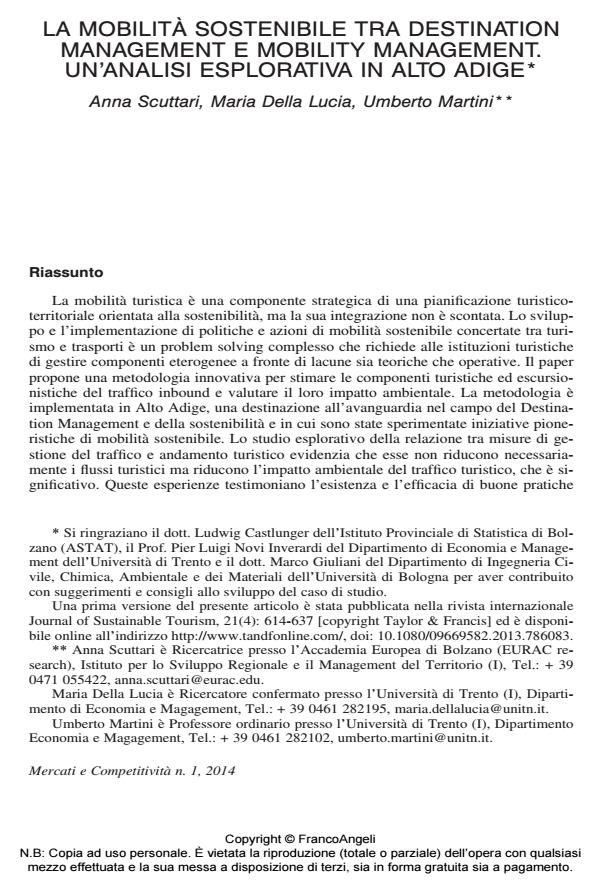La mobilità sostenibile tra destination management e mobility management. Un’analisi esplorativa in alto adige
Titolo Rivista MERCATI E COMPETITIVITÀ
Autori/Curatori Anna Scuttari, Lucia Maria Della, Umberto Martini
Anno di pubblicazione 2014 Fascicolo 2014/1
Lingua Italiano Numero pagine 27 P. 125-151 Dimensione file 1069 KB
DOI 10.3280/MC2014-001007
Il DOI è il codice a barre della proprietà intellettuale: per saperne di più
clicca qui
Qui sotto puoi vedere in anteprima la prima pagina di questo articolo.
Se questo articolo ti interessa, lo puoi acquistare (e scaricare in formato pdf) seguendo le facili indicazioni per acquistare il download credit. Acquista Download Credits per scaricare questo Articolo in formato PDF

FrancoAngeli è membro della Publishers International Linking Association, Inc (PILA)associazione indipendente e non profit per facilitare (attraverso i servizi tecnologici implementati da CrossRef.org) l’accesso degli studiosi ai contenuti digitali nelle pubblicazioni professionali e scientifiche
La mobilità turistica è una componente strategica di una pianificazione turisticoterritoriale orientata alla sostenibilità, ma la sua integrazione non è scontata. Lo sviluppo e l’implementazione di politiche e azioni di mobilità sostenibile concertate tra turismo e trasporti è un problem solving complesso che richiede alle istituzioni turistiche di gestire componenti eterogenee a fronte di lacune sia teoriche che operative. Il paper propone una metodologia innovativa per stimare le componenti turistiche ed escursionistiche del traffico inbound e valutare il loro impatto ambientale. La metodologia è implementata in Alto Adige, una destinazione all’avanguardia nel campo del Destination Management e della sostenibilità e in cui sono state sperimentate iniziative pioneristiche di mobilità sostenibile. Lo studio esplorativo della relazione tra misure di gestione del traffico e andamento turistico evidenzia che esse non riducono necessariamente i flussi turistici ma riducono l’impatto ambientale del traffico turistico, che è significativo. Queste esperienze testimoniano l’esistenza e l’efficacia di buone pratiche che ad oggi non sono direttamente collegate a strumenti di analisi della mobilità, ma potrebbero beneficiarne.
Parole chiave:Destination management; mobility management, mobilità turistica sostenibile, analisi del traffico turistico, buone pratiche di gestione del traffico, effetti delle misure di gestione del traffico
Anna Scuttari, Lucia Maria Della, Umberto Martini, La mobilità sostenibile tra destination management e mobility management. Un’analisi esplorativa in alto adige in "MERCATI E COMPETITIVITÀ" 1/2014, pp 125-151, DOI: 10.3280/MC2014-001007